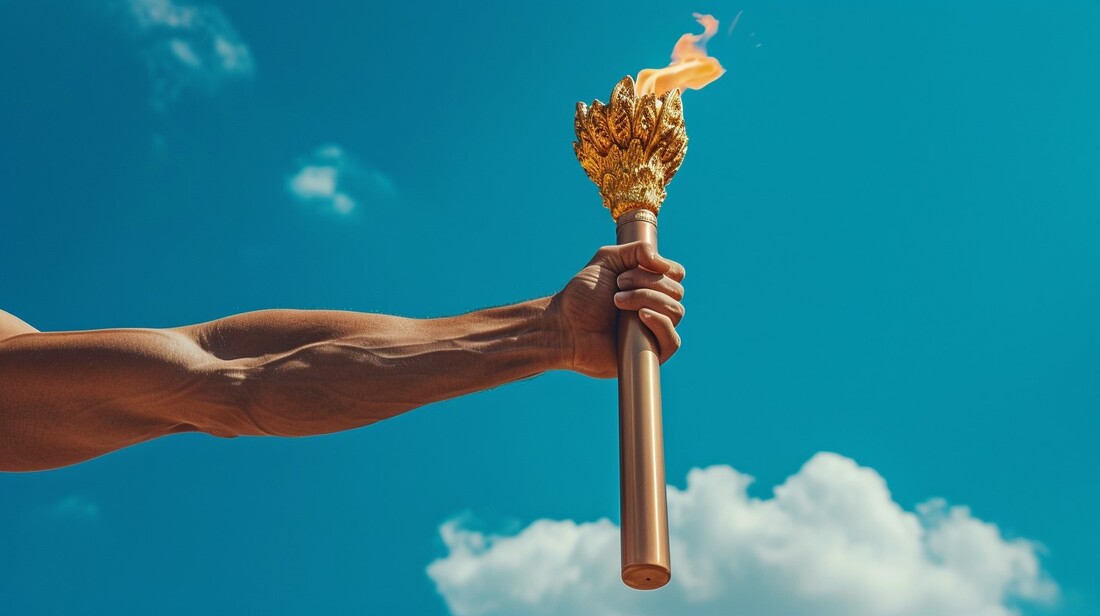Javelin, a sport that traces its roots back to ancient civilizations, is much more than just hurling a spear-like object across a field. It’s a harmonious blend of strength, technique, and precision, captivating audiences and athletes alike. From its early days as a survival skill and a warrior’s weapon to its evolution into a prestigious Olympic event, javelin has grown into a symbol of athletic excellence. This article explores how this ancient practice transformed into a modern sport, its rich history, and what makes it a test of both physical and mental prowess.

Sport javelin throw
The javelin throw is a fascinating track and field event, blending raw power, precision, and a touch of artistry. Imagine launching a spear-like object with the grace of a dancer and the force of a catapult, aiming for maximum distance. It belongs to the athletics category and stands out for its unique mix of technique and strength. Athletes sprint down a runway, building momentum before unleashing the javelin with a perfectly timed throw. Understanding how is javelin a sport highlights its evolution from an ancient hunting skill to an Olympic spectacle, where competitors push the limits of human potential.
History of the development of javelin throw: from ancient times to the present
The history of the javelin throw is like a journey through time, from ancient battlefields to modern stadiums. Originally a survival tool and weapon, the javelin was used by hunters and warriors to showcase their skill and strength. Over time, it became a sport in ancient Greece, featured in the Olympic Games alongside events like discus and long jump. Fast forward to today, and the javelin throw is a staple of track and field competitions, blending ancient tradition with modern athleticism. Understanding how is javelin a sport today means appreciating its evolution from a practical tool to an Olympic event, where athletes push boundaries with technique and power, honoring its deep historical roots.
Javelin throw as a sport included in the Olympic Games

The javelin throw has been turning heads since it first joined the Olympic Games in 1908, bringing a mix of ancient tradition and modern athleticism to the world stage. It’s like watching a mix of artistry and raw power as athletes launch the javelin with perfect timing and explosive energy. Over the years, the event has evolved with stricter rules and advanced equipment, but its essence remains the same. Understanding how is javelin a sport helps you appreciate why it’s still a highlight of the Olympics today, continuing to inspire awe and push the limits of human strength and precision.
What criteria were used to include javelin throw in the Olympic Games program
The javelin throw earned its spot in the Olympic Games by meeting criteria that blend tradition, athleticism, and universal appeal. Its roots in ancient Greece as a skill-testing event made it a natural fit for the modern Olympics’ mission to honor history while celebrating human potential. The sport showcases a unique combination of strength, speed, and technique, creating a spectacle that captivates audiences. Its straightforward rules and accessibility—requiring only a javelin and a field—ensure inclusivity for athletes worldwide. Understanding how is javelin a sport included in the Olympics highlights its balance of historical significance and competitive thrill, making it a timeless event.
Rules of the sport javelin throw
The rules of the javelin throw keep things fair and exciting, turning a simple act of throwing into a true test of skill and strategy. Athletes sprint down a runway, building speed like a race car before launching the javelin with perfect timing. The throw must land tip-first within marked boundaries to count, and stepping outside the designated area or throwing improperly means a foul. Understanding how is javelin a sport involves appreciating the precision and discipline required to execute each throw flawlessly while adhering to these strict rules. It’s all about balancing power, technique, and control to achieve that perfect throw.
Throwing apparatus

The javelin itself is more than just a spear; it’s a precision-crafted tool designed to fly through the air like a bird gliding on the wind. Made from lightweight yet durable materials like metal or composite alloys, the javelin has a sharp tip to ensure it lands correctly, and its weight and length are carefully regulated to maintain fairness in competition. Male and female athletes use different specifications, with men’s javelins being slightly heavier and longer. Understanding how is javelin a sport includes knowing that this throwing apparatus isn’t just about power but about mastering aerodynamics and precision to achieve the longest throw.
Throwing zone
The throwing zone in javelin is like the stage for a performer, the place where all the action happens. It’s a marked runway, usually 30-36.5 meters long, where athletes build up speed before launching the javelin into the air. At the end of the runway is the arc, the final boundary where the thrower must stay behind to make their attempt valid. The javelin must land within the designated sector, a fan-shaped area extending outward. Understanding how is javelin a sport means recognizing the importance of this throwing zone, where precision, timing, and power come together to create a winning throw.
Throwing technique
The throwing technique in javelin is like a choreographed dance blended with raw power, requiring every move to flow perfectly into the next. It starts with a controlled sprint down the runway, gaining momentum like a wind-up toy ready to explode. As the thrower approaches the arc, they shift their body weight, coil their energy, and release the javelin in one smooth, explosive motion. The key is in the timing, using the whole body—from legs to core to arms—to create a whip-like effect for maximum distance.
Evaluation of results
After each throw, officials measure the distance from the point where the javelin’s tip first hits the ground to the throwing arc, using a straight line to ensure fairness. The javelin must land tip-first within the marked sector for the throw to count. If multiple athletes achieve similar distances, their next-best throws break the tie. Understanding how is javelin a sport includes appreciating the meticulous process of evaluating results, where every centimeter can decide the difference between gold and silver.
Differences in javelin throwing rules for male and female athletes

The differences in javelin throwing rules for male and female athletes come down to the equipment, making the competition fair while acknowledging physical distinctions. Men throw a heavier and longer javelin, weighing 800 grams and measuring around 2.7 meters, while women use a slightly lighter and shorter one at 600 grams and 2.3 meters. These differences ensure that both men and women can showcase their strength, technique, and precision on an even playing field. Understanding how is javelin a sport means recognizing these subtle adjustments that celebrate athleticism while respecting diversity in physical abilities.
Javelin Throw Records for Men
Javelin throw records for men are a testament to the incredible feats of human strength and precision, with names etched in history like legends of old. The current world record is held by Jan Železný from the Czech Republic, who threw an astonishing 98.48 meters in 1996, a mark that still inspires awe. Other notable names include Johannes Vetter from Germany, known for his consistent performances over 90 meters, and Neeraj Chopra from India, the 2020 Olympic champion who has brought fresh excitement to the sport. Understanding how is javelin a sport reveals the dedication and talent these athletes pour into every throw, chasing records that push the boundaries of possibility.
Javelin Throw Records for Women

Javelin throw records for women showcase incredible talent and determination, with athletes pushing the limits of what’s possible. The world record is held by Barbora Špotáková from the Czech Republic, who threw an unbelievable 72.28 meters in 2008, setting a standard that still stands strong. Other iconic names include Petra Felke from Germany, who once dominated the sport, and Liu Shiying from China, the 2020 Olympic champion who continues to inspire a new generation.
From its ancient origins steeped in history to its current status as a showcase of athleticism and strategy, javelin has endured as a fascinating sport that bridges the past and present. Its transformation reflects humanity’s ability to honor tradition while embracing innovation. By understanding how javelin became a sport, we not only gain insight into its unique challenges but also celebrate its timeless appeal that continues to inspire athletes around the world.
